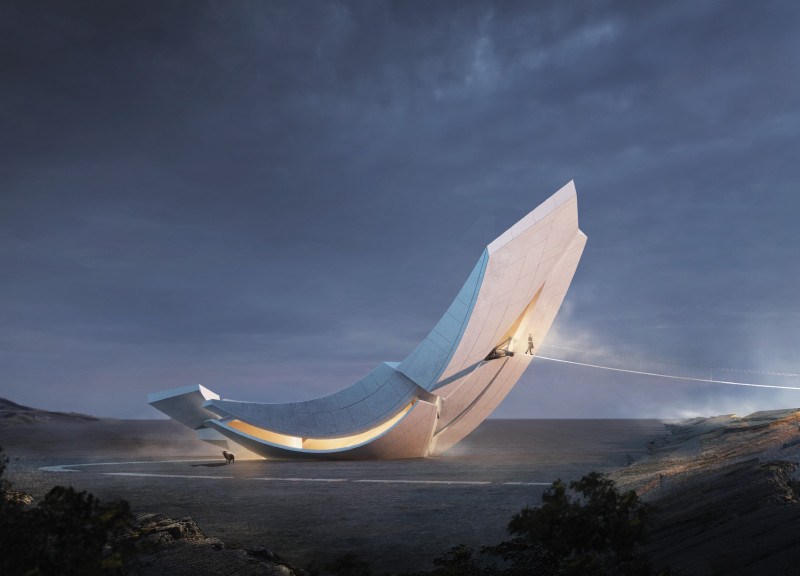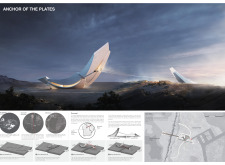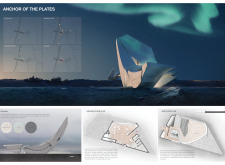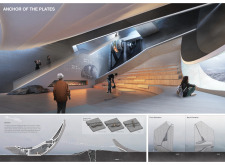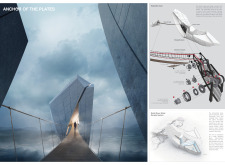5 key facts about this project
The project "Anchor of the Plates" is located on the north side of Iceland, around 290 kilometers from Reykjavík. This site is positioned along the boundary of the North American and Eurasian tectonic plates, a place where the earth reveals its geological history through cracks and fissures. The design aims to connect these two plates, representing the natural tension and movement of the land. It also serves as a visitor center, allowing people to engage with the remarkable landscape around them.
Concept and Design Intent
The main theme focuses on linking and reflecting the natural tension found in tectonic activity. The architecture uses 'anchors' that connect the two plates both literally and symbolically. Observation towers act as bridges striving to close the gap between these natural divides. This concept not only takes into account the geographical features of the area but also highlights human efforts in the face of powerful natural forces.
Structural Elements
Notable features of the design include a slender rope-way bridge connecting the opposing banks. This bridge is characterized by a machine-like appearance. It incorporates a gear system that can automatically adjust to geological changes. This adaptability allows the structure to respond to the shifting landscape, enhancing the experience for visitors who come to witness these natural changes.
Materiality and Sustainability
The design employs a shell structure covered with terracotta panels. These panels are chosen for their visual appeal and functional properties. The project is designed to collect sunlight and rainwater, showcasing an approach to sustainable resource management. This consideration of materials ensures that the structure can withstand Iceland’s challenging climate while harmonizing with the natural environment.
Visitor Experience
The observation tower features two entrances that lead to Kvennagja Cave and Karlagja Cave, effectively separating areas for public use from private bathing experiences. This well-thought-out layout caters to diverse visitor needs while encouraging exploration and personal reflection. From the observation deck, visitors have the opportunity to enjoy wide views of the rugged landscape, while openings in the walls allow light and scenic views to enter the interior spaces.
The design emphasizes its connection with the land, creating an experience that reflects the geological and cultural stories of Iceland. With observation towers resembling guardians of the landscape, the structure invites visitors to contemplate the immense beauty and power of the ground beneath their feet.


